![]()
![]()
![]()
Use LEFT and RIGHT arrow keys to navigate between flashcards;
Use UP and DOWN arrow keys to flip the card;
H to show hint;
A reads text to speech;
28 Cards in this Set
- Front
- Back
- 3rd side (hint)
|
Periplaneta fuliginosa |
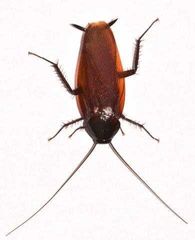
Smokybrown Cockroach |
It is a common pest of the southeastern United States. |
|
|
Periplaneta australasiae |

Australian Cockroach |
Despite its name, it is a cosmopolitan species, and an introduced species in Australia; P. australasiae probably originated in Africa. |
|
|
Supella longipalpa |
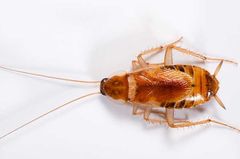
Brown-banded Cockroach |
They are known to spread bacteria, parasitic worms, and other human pathogens. |
|
|
Blatta orientalis |
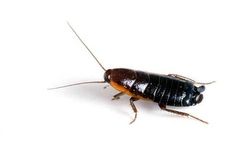
Oriental Cockroach |
They are often identified by the very powerful, musty, foul-smelling odor that they emit. |
|
|
Eurycotis floridana |
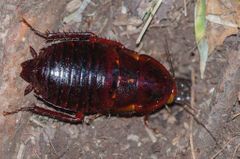
Florida Woods Cockroach |
It's slower moving than many other species in its family. |
|
|
Gromphadorhina portentosa |

Madagascar Hissing Cockroach |
They're unusual because they are able to produce sound by forcing air through their spiracles. |
|
|
Blaberus craniifer |
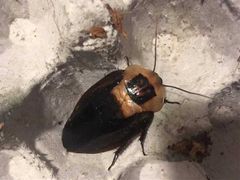
True Death's Head Cockroach |
They have a black patch on their pronotum, or dorsal plate, resembling a skull, which is how this species got its name. |
|
|
Periplaneta americana |
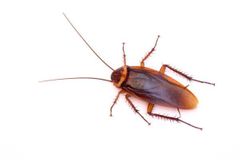
American Cockroach |
It’s been reported that more than 5,000 individuals were once found in a single sewer manhole. |
|
|
Ampulex compressa |
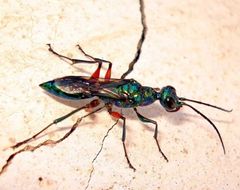
Emerald Cockroach Wasp |
It is an entomophagous parasite. |
|
|
Dinocampus coccinellae |
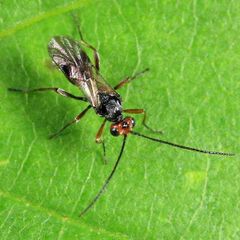
|
It spreads Dinocampus coccinellae paralysis virus, which is a single-stranded, positive-sense RNA virus of insects, in the picorna-like virus family Iflaviridae, first characterised in 2015. |
|
|
Coccinella undecimpunctata |
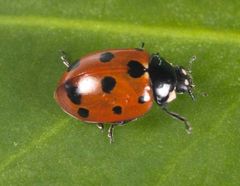
Eleven-spot Ladybird |
It is more elongate and less convex than any other species of Coccinella. |
|
|
Halyzia sedecimguttata |
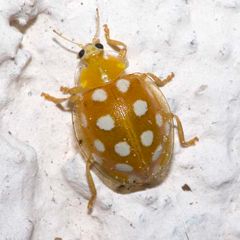
Orange Ladybird |
They mainly feed on Erisyphaceae infesting trees and bushes. |
|
|
Galleria mellonella |
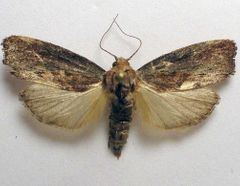
Greater Wax Moth |
Larvae of this species have successfully been used in human and animal infectious disease studies. |
|
|
Ephestia elutella |
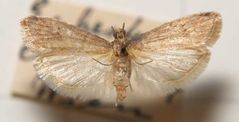
Cacao Moth |
The caterpillars are often considered a pest, as they feed on dry plant produce, such as cocoa beans and tobacco, as well as cereals and dried fruit and nuts. |
|
|
Ephestia kuehniella |

Mediterranean Flour Moth |
The female lays somewhere between 100-200 eggs, often attached to flour or grain particles. |
|
|
Cadra cautella |
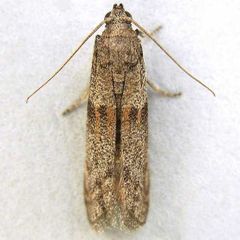
Almond Moth |
It's a small, stored-product pest. |
|
|
Plodia interpunctella |
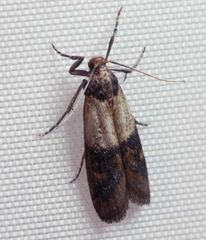
Indianmeal Moth |
The larvae of this species have the ability to bite through plastic and cardboard; thus, even sealed containers may be infested. |
|
|
Lymantria dispar |
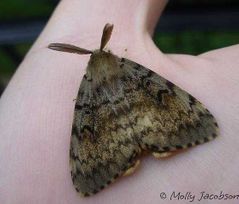
Gypsy Moth |
It was deliberately introduced from Europe at Medford, Massachusetts in 1868 or 1869 by Leopold Trouvelot, who hoped to raise this species for silk production. |
|
|
Agrilus planipennis |

Emerald Ash Borer |
Originally from Asia, this species was first discovered in the Detroit area in 2002. |
|
|
Popillia japonica |
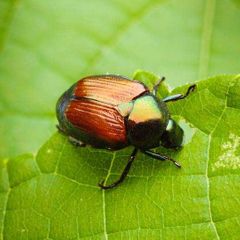
Japanese Beetle |
The first one found in Canada was in a tourist's car at Yarmouth, arriving in Nova Scotia by ferry from Maine in 1939. |
|
|
Harmonia antipoda |
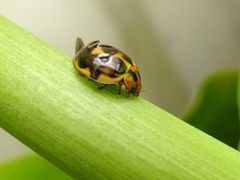
Antipodean Ladybird |
It occurs in forests on the North Island of New Zealand. |
|
|
Cycloneda sanguinea |
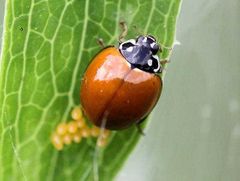
Spotless Ladybird |
It has no spots on its elytra. |
|
|
Hippodamia convergens |
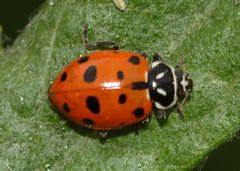
Convergent Ladybug |
They are used for the biological control of aphids. |
|
|
Thymelicus sylvestris |
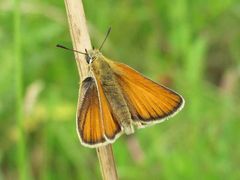
Small Skipper |
Despite its name, it's either the same size or larger than other members of its family in the UK. |
|
|
Ochlodes sylvanus |
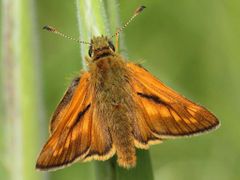
Large Skipper |
Adults fly between June and August, when they can often be seen resting in sunny positions and long grass, or feeding on flowers such as Bramble. |
|
|
Carterocephalus palaemon |
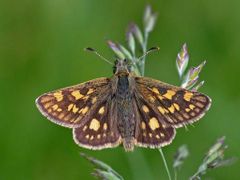
Chequered Skipper |
It mysteriously vanished from England after the long hot summer of 1976, but was reintroduced in 2018. |
|
|
Thymelicus lineola |
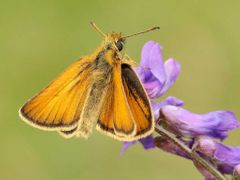
Essex Skipper |
It has a wingspan of 2.5 to 2.9 cm. |
|
|
Pyrgus malvae |
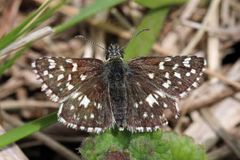
Grizzled Skipper |
It is a Holarctic species with three named subspecies in North America. |

